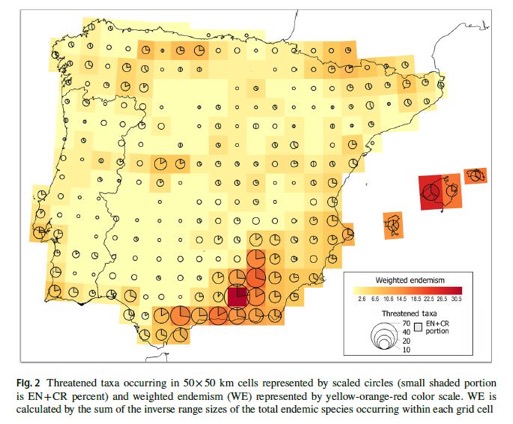Buira, A., Cabezas, F., Aedo, C.
Disentangling ecological traits related to plant endemism, rarity and conservation status in the Iberian Peninsula
Biodiversity and Conservation, . (article in press)
DOI: 10.1007/s10531-020-01957-z
RESUMEN
The Iberian Peninsula and the Balearic Islands are home to 1823 endemic taxa of vascular plants (nearly a quarter of total flora), half of which are narrowly distributed. Here, we explore the ecological traits related to endemism and rarity, and identify the variables other than range size associated with the conservation status. As found in other studies, narrow endemics seem to be prevalently adapted to stressful habitats in which aboveground competition is relatively low. In ecological terms, the greatest richness is found in mid-altitude calcareous rocky habitats, and secondarily in open Mediterranean shrubby formations. Coastal, steppic and alpine habitats contribute to endemism in specific regions and the species that inhabit them tend to have small ranges. A large percentage of narrow endemics (19%) grow on special substrates, underlying the importance of edaphic islands as drivers of spatial isolation. More productive habitats such as grasslands, wetlands and forests are negatively associated with endemism, and endemics occurring therein tend to be widely distributed. A total of 454 endemic taxa (25% of total endemics) are regarded as threatened, most of which belong to species-rich lineages. Certain ecological settings appear to be more likely to contain threatened species than others, wet lowlands, coastal habitats and steppic scrub being the most significant in decreasing order. Paradoxically, the areas of occupancy of the species occurring therein are relatively less protected. On the contrary, a large proportion of montane and alpine habitats are protected and many endemics found there are regarded as non-threatened at present. Nevertheless, some centers of endemism located at high elevations are at risk due to global warming.
